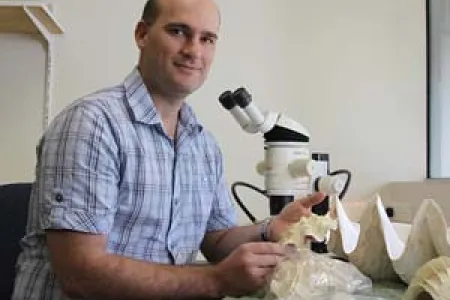Research to save NT’s giant clams
A researcher who has spent the past six years scouring the Territory’s coastline in search of a disappearing giant clam has discovered that clam species are more diverse in our Northern waters than previously thought.
With scant records available on what was thought to be the only species of giant clam found in the NT and concern from Indigenous people that it was on the brink of extinction, Shane Penny enrolled in a PhD with Charles Darwin University to find out more about these colourful giants.
“Previous to this study it was thought that only one species of giant clam was found in the NT, Tridacna squamosa (Fluted Giant Clam),” he said.
“By collaborating with Indigenous people and conducting video surveys and tissue biopsies, I looked into aspects of their ecology and population genetics and found a lot of new information about the species.”
Dr Penny surveyed 17 sites across the NT from Darwin Harbour to Cobourg Peninsula, Gove, Cape Arnhem and Groote Eylandt.
“I have been able to confirm there are four species in the NT rather than the single species we previously thought occurred in Northern waters,” he said.
He said that understanding the diversity of giant clams had important consequences for conservation and future management of the species.
“What we do know is that they are slow growing, with low reproductive success, which makes them susceptible to high rates of harvest or environmental disasters,” Dr Penny said.
“Misidentifying species can lead to an over-estimation of their abundance. We may think we are dealing with a single species when in fact we might be surveying more species that are less abundant.”
While analysing genetic tissue samples during his PhD research to establish the conservation status of giant clams in the NT, Dr Penny also detected a new species in Western Australia alongside researchers from the University of Queensland.
“What we found is known as a cryptic species,” he said. “This means it looks very similar to one or more common giant clam species, but they are genetically distinct.”
He said that despite protection under international treaties, giant clams continued to be harvested and were rapidly becoming extinct near easily accessible sites, particularly in south-east Asia.
Dr Penny will graduate at the CDU graduation ceremonies today (Friday 14 October) at the Darwin Convention Centre. His thesis was entitled: “Ecological Assessment of the Fluted Giant Clam, Tridacna squamosa, in the Northern Territory, Australia”.
